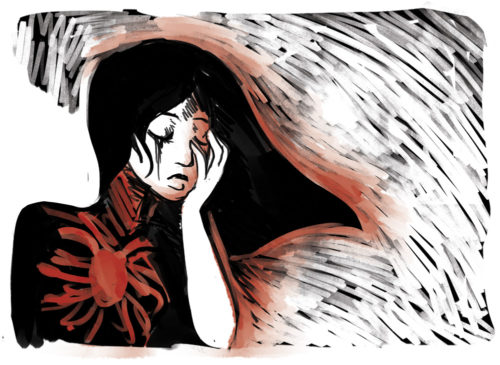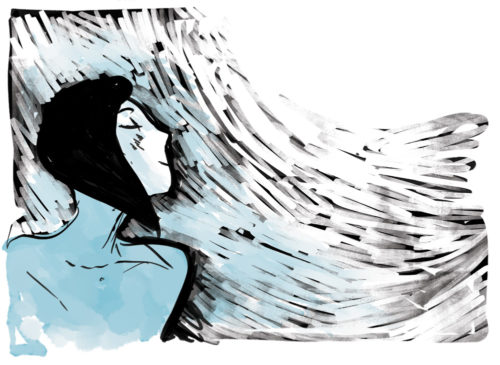
I remember falling in love with being a tortured artist. It was romantic, dramatic, and the truest thing in the world. All my favourites lived lives as intense as their art – one mirroring the other until, tragically early, their life’s thread was cut and their stories ended. The small portfolios they left behind were genius. Perfect, if unfinished. Which somehow made them even more beautiful.
As a young artist with mental health issues it was easy to spin myself into that narrative, to let my illness sweep me into this dramatic despair that engulfed every part of me and what I made. My life’s path seemed like those of the greats, and the self indulgence of that idea was as addictive as it was destructive. Take the raw, wriggling guts and slather them unedited onto the nearest absorbable surface. That was art. I was in love with being tortured. It made me truer, better, sharper, or so I felt.
It was bullshit. Being unwell, physically or mentally doesn’t make your art better. All it means is that you are an artist with mental illness.
Suffering is not the price of entry to creativity.
If we as artists believe our suffering is a part of creativity, then we are selling ourselves short. Mental illness diminishes capacity, capability and perspective for all aspects of life, including artistic practice. If we believe that our unwellness keeps us making (or keeps what we’re making good), then there’s a romance to avoiding treatment, to actively pursuing poor mental health. And exquisite pain to frame with beautiful words and wear with pride.
It took experiencing chronic physical illness for me to separate my mental illness from my art, but it’s been one of the best things I have done for myself creatively. It wasn’t something that happened quickly – it took years of me working at it to remove my art and mental health from being associated in my head. I had to retrain myself to find positive paths to creativity that didn’t tour through the dumpster fire that was the depressed parts of myself. (BTW, I don’t recommend this pathway for anyone, it was just a pleasant side-effect for me while dealing with chronic illness)
Finding new role models and new ways
While the bright stars that burned out were awe-inspiring and emotional, for every one of them there are at least 10 artists I adored who lived very stable lives with long careers. As my health improved the idea of being in a lover’s pact with my own mental illness became less appealing, and the pathway towards stable health and a stable art practice became something I could realistically strive for.
I’m not a story, I’m a person. I don’t have to live my life as if it’s art. I can be boring and stable in order to provide myself with the space and flexibility to be creative. I’m now in love with looking after my mental health – with finding stability and strength in my routines, in caring for myself and giving myself space to breathe.
In breaking free of the seduction of the tortured artist trope I take better care of myself, and I’m also making work I’m much happier with than when I let my guts be the whole story.
There’s a lot of pain in the world. For me, making art that glorifies and indulges in unhealthy practice doesn’t ring true anymore. There’s strength in stability, in pursuing creativity free of the panic and torture mindset I’d grown up with. While I do believe my mental health will be something I must consciously focus on my whole life, it’s very rewarding to look at where I am in my art now and feel good about what I’m making, and why.
